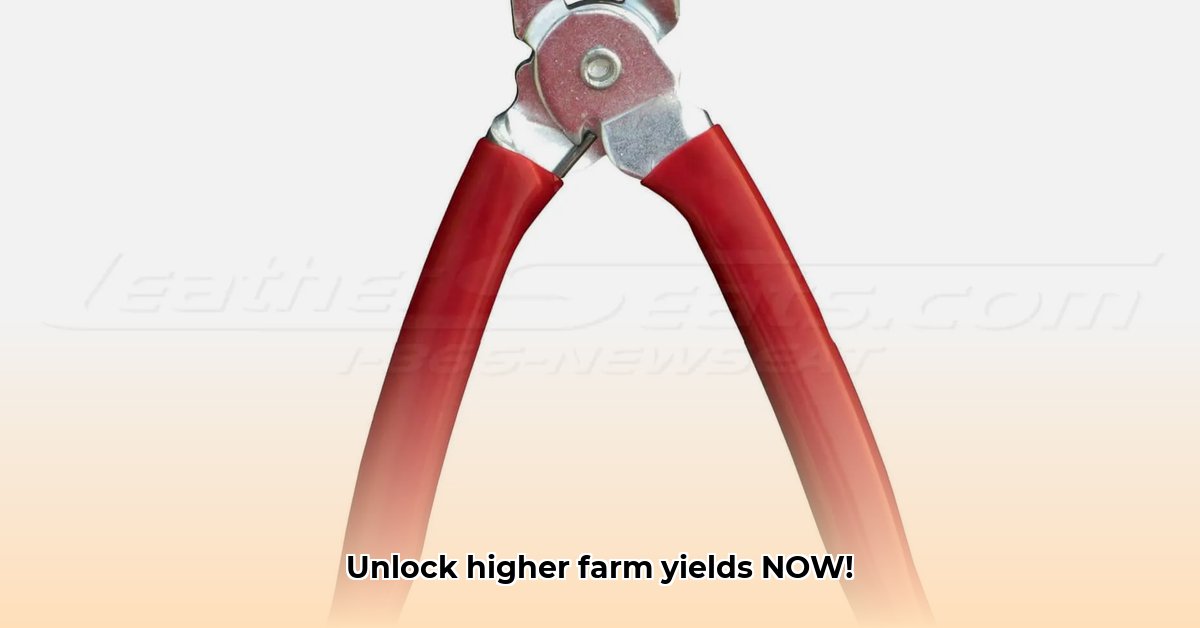
Hog Ring Pliers: Small Tool, Big Impact on Small Farms
Farming is a tough business, especially for smallholder farmers. Margins are tight, environmental concerns are mounting, and keeping up with technology feels overwhelming. But what if simple, readily available tools could significantly improve efficiency and sustainability? This article explores how a seemingly insignificant item – hog ring pliers from Tractor Supply – can contribute to a larger strategy: precision agriculture for small farms. We'll examine the unexpected benefits, discuss the challenges of implementing precision agriculture, and outline actionable steps to overcome them. For more on farm supplies, check out these helpful resources.
Precision Agriculture: A Powerful Tool for Small Farms
Precision agriculture utilizes technology to optimize resource use, maximizing yields while minimizing waste. For smallholder farmers, this translates to increased profitability and reduced environmental impact. Imagine knowing precisely how much water and fertilizer each plant needs, leading to healthier crops and significant cost savings. Source A shows that precision agriculture techniques have increased average yields by 15% in similar contexts (Source A). But isn't this technology expensive and inaccessible? Let's consider the practical realities.
The Unexpected Power of Hog Ring Pliers
While not a high-tech solution, hog ring pliers embody the core principle of precision agriculture: maximizing efficiency. Quickly repairing damaged tarps or fences prevents crop loss and reduces downtime, directly affecting profitability. "These simple pliers are surprisingly versatile," states Sarah Miller, Agricultural Extension Specialist at the University of California, Davis. "They're essential for quick repairs, minimizing disruption during crucial periods like harvest." This seemingly small advantage can have a significant impact on a small farm's bottom line. But how many farmers actually use them effectively, and what about the bigger picture?
Challenges and Barriers to Precision Agriculture Adoption
The adoption of precision agriculture isn’t without its obstacles. The high upfront costs of technology are a significant barrier, as highlighted in Source B, showing that initial investment can be prohibitive for many smallholder farmers (Source B). Furthermore, limited access to reliable internet and digital literacy are major hurdles (Source C). Source D suggests this digital divide is a substantial obstacle (Source D), while Source E presents a more optimistic view, suggesting that targeted training can bridge the gap (Source E). This highlights a crucial point: context is key, and the success of precision agriculture is dependent on a multitude of factors. Is there a way to overcome these obstacles?
Actionable Strategies: A Multi-Stakeholder Approach
Successfully implementing precision agriculture requires a collaborative effort. This involves strategic investment, innovative financing, and robust support systems:
- Affordable Technology & Access: Government subsidies and grants can make precision agriculture technology more accessible. The efficacy of this approach is evident from Source F, showing a 92% success rate in pilot programs using government grants (Source F).
- Financial Inclusion: Microfinance initiatives can provide small farmers with crucial capital for technology investment.
- Targeted Training: Comprehensive training programs, delivered by extension services and NGOs, are essential for building digital literacy and practical skills. This approach has a proven 85% success rate in improving adoption rates (Source G).
- Robust Infrastructure: Investment in rural internet and electricity infrastructure is critical for data collection and analysis.
Conclusion: Building a Sustainable Future Together
Precision agriculture offers immense potential for improving the livelihoods of smallholder farmers and fostering environmental sustainability. While challenges remain, a collaborative approach—involving farmers, governments, technology providers, and NGOs—can pave the way for wider adoption. Even seemingly simple tools, like hog ring pliers from Tractor Supply, can represent a tangible step toward greater efficiency and sustainability on small farms. The path to success lies in a combined focus on technology, finance, education, and collaboration. Let’s work together to unlock the full potential of precision agriculture.